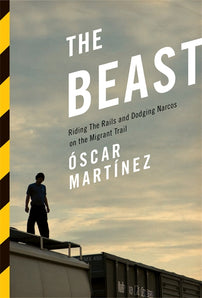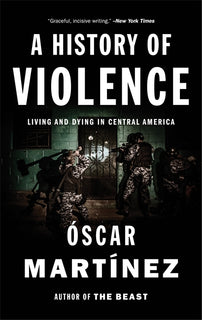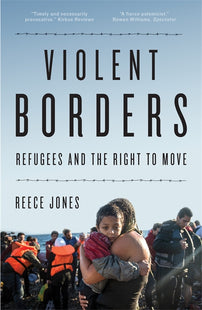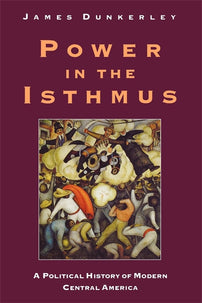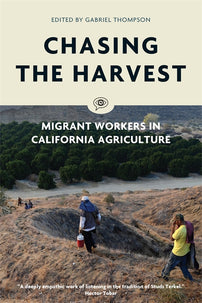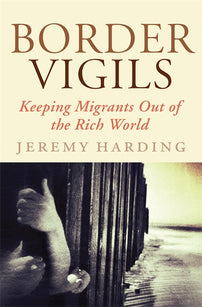Running from Resignation: Central Americans on the Migrant Trail
Óscar Martínez considers why Central American migrants will not stop seeking a way into the trap of the United States.

In The Beast: Riding the Rails and Dodging Narcos on the Migrant Trail, Salvadoran journalist Óscar Martínez chronicles stories of the voyage taken by Central Americans on the migrant trail through Mexico to the United States, risking death, extreme injury, rape, robbery, and kidnapping. The book first appeared in Spanish in 2010, and was published by Verso, in a translation by Daniela Maria Ugaz and John Washington, in 2013.
In the excerpt below — the afterword to the 2014 paperback edition — Martínez explains the motivations behind his reporting and explains why these journeys — which start badly and almost always only get worse — will not stop anytime soon.
There’s an image from the migrant trails that I’ll never forget. A man missing his right leg, a crutch under each arm, stepping into the darkness toward the train tracks. It was 2009. Before leaving, the man told me: It has stolen so much from me, I don’t think there’s much more to take. It was the train, which sliced his leg off two years before I saw him step toward the tracks in Ixtepec, a small city in southern Mexico. Hoping to make it to the United States, the man was migrating without papers through Mexico. The cargo train that took his leg was moving at full speed when the man saw some lights in the distance. The migrants riding on top, mostly Central Americans, thought it was a migration raid, and a violent wave of people surged forward on top of the train. The man fell, and the train — The Beast — devoured his right leg. The lights ended up being from a nearby town instead of signaling a raid. The train kept on. Luckily, some migrants mercifully sprang up to save the mutilated man, and took him to a hospital where he was tended to and then discharged to a shelter for the crippled a little further south. It took two years for the man to heal, before he learned how to use his crutches with skill. Feeling strong enough for another try, he walked with one leg and two crutches towards the tracks to hop again on The Beast. When I saw him, he was about to catch his second train of the trip. Two years and one mutilation later, the man still had the same goal: make it to the United States to work. But before getting there, and he knew this well, he still had to get through the worst of Mexico, the state of Veracruz, where the Zetas controlled many of the towns and cities.
I write this scene to explain something to the reader: undocumented migration to the United States will not stop. Or, it’s safe to say, neither the reader nor I will see a time when it will stop. Undocumented migration to the United States may fluctuate depending on the year, but like a river it continues, ebbing and flowing, always finding its way to the sea.
I could rely on numbers to support my case and say that in 1994, with recycled material from the Gulf War, the first border wall between Mexico and the United States was constructed: a six-foot-high metal fence between Tijuana and San Diego. I could say that that same year Operation Gatekeeper and Operation Hold the Line were started, which riddled the borderlands with reflectors and motions sensors. I could say that in 1997, President Bill Clinton ordered the construction of a second wall, what we now know as the border wall. I could say that in 2008, President George W. Bush tried to curb the flow of migration and raised the number of Border Patrol agents on the 1,900-mile stretch of border to 18,000 from 12,000. That was Operation Jump Start. By 2008, some 2,500 agents patrolled the sixty-mile range of the San Diego border sector, trying, in vain, to ensure that no undocumented migrant could cross into the US on their watch. In February of 2008, within only five months of starting Operation Jump Start, the Border Patrol had detained 54,709 undocumented migrants trying to make it to San Diego and from there, probably, to Los Angeles. Only in that small stretch of border. All those people, in spite of the metal fence, the wall, the sensors, the Border Patrol, they still tried to make it. There’s a ratio I’ve heard Border Patrol agents mention: that they detain less than half of those who try to cross.
I could give you more facts, but for me the image of a mutilated man leaning on his crutches is a lot more powerful than any sum or number.
Almost all of the undocumented migrants that you’ve read about in these pages come from three countries: El Salvador, Guatemala, and Honduras. Those three countries make up the northern triangle of Central America, and the most violent region in the world according to their murder rate per 100,000 inhabitants. Right now Honduras is the most violent country. Eighty-two of every 100,000 Hondurans are assassinated every year. If, like a murky cloud, we were to shift this murder rate to the skies of New York, some 6,800 New Yorkers would be killed every year. Central America is also one of the poorest regions in the Americas. It’s estimated that almost half of the population of Honduras, El Salvador, Guatemala, and Nicaragua lack sufficient money to cover their basic needs: eat well, live in a concrete house, have access to water and electricity.
Central America hasn’t yet gotten over its darkest era, from the 1980s to the early 90s, when El Salvador and Guatemala confronted relentless civil wars that left more than 75,000 dead in one country and more than 200,000 in the other. Civil wars characterized by indescribable massacres perpetrated by elite army battalions, backed by US money, led by soldiers and generals who were trained at the US School of the Americas. Central America, after the peace deals of the 1990s, was left mutilated, with families lacking fathers and mothers, many children raised only by their grandmothers. Central America was left uncultured, with a generation that knew nothing else but how to take up arms. In its weakest years Central America was ridden with gangsters who had been deported primarily from Southern California, where they had become members of one of the dozens of US gangs. Central America was left hurt and divided, poor, and weak.
That’s where these stories come from, stories of the men and women who appear in this book. That’s where, broadly speaking, they get the desire to flee, to search for another life in the United States, a place that for generations and generations has been sold as a promised land, a place where life can rise out of so much death, so much misery. That is the illusion that moves them.
For more than two years I traveled with these people in their attempt to cross that colossal obstacle — Mexico — that they have to surmount before even approaching the United States. I was witness to many hardships on these trails, many of which I have recounted in the preceding chapters. Women — hundreds of women — raped; women sold into prostitution in sordid and repugnant brothels; men, women, and children whose bodies were bitten by the train, by The Beast; men, women, and children on their own against ruthless drug cartels, preed on by Los Zetas; racist and unforgiving people scrutinizing migrants as if they were trash, or nothing but potential profit; and above all a government, the Mexican government, watching it all with a disinterested gaze that tells us that not all humans are worth the effort, that there are some we protect and others we let suffer and die. That there are some people who are important and others who are not. It’s that simple. And beyond Mexico, protecting the land of abundance and prosperity, there is the border, the wall, the sensors, the helicopters, the Border Patrol, the desert, and the Rio Grande. The Central American journey toward the false promised land is like climbing the slopes of Everest: the higher you get the less air there is to breathe, the more your body aches, the hardest challenges coming when you are at your weakest. At every step, the migrant trail offers only one deal: surrender yourself.
During my various trips with these undocumented migrants I kept asking the same question: if you’re willing to go through all of this, then what must you be running from? Many of their answers are recorded in this book. But if I had to collapse them into one single answer, I’d say that they are not running from hunger — that most primal of needs — but from resignation. I’d say that they’re unable to accept that miserable routine of waking up at five in the morning to travel two hours on a dangerous public transit system to get to a fast-food restaurant or a market or a warehouse in San Salvador, or in Tegucigalpa, or in Guatemala City, where they spend the whole day toiling away at undignified work only to return to their small homes, dog-tired, making a measly minimum wage that barely lets them afford beans and tortillas for their children. They are running, I believe, from the resignation that their children repeat the same miserable lives to which the depraved reality of Central America has condemned more than half of its inhabitants.
And now that I think about it, now that the book has been translated into English, I realize I never asked these courageous travelers an equally important question: Where do you think you’re going? I don’t mean what their next step will be on the tortuous migrant paths, as it’s clear that very few have any idea. I remember speaking to a few undocumented migrants on the border between Arizona and Sonora who were surprised to hear me explain that there was an entire desert still ahead of them.
What I want to ask now is what they believe the United States will be for them. Because for the migrant the United States is a diffuse, mystifying idea. Those I spoke with, including those who had relatives who had already crossed Mexico, didn’t know what they were up against. In Central America we’ve forged an identity for the migrant that says that you go north to be a hero, you go to save your family. Many young adults in Central America don’t plan on going to college. Their life trajectory is pointed solely at the US, just like it was for their parents and for their grandparents. And those who set out on this heroic journey are often reluctant to tell their families that they were raped, kidnapped, robbed, and beaten along the way. Migrants are silent, guarded. And silent not just about the voyage, but also about life in the US.
In my few trips to the US I spoke with many undocumented migrants and various leaders of Latin American communities. Though their stories of success inspire the courage for many others to take the journey, most of the stories I heard were of hardship, of brutal working conditions, of fear, of secret lives marked by the constant possibility of deportation, of the humiliation suffered because of the threats from and scorn showed them by some American citizens.
Traveling with migrants throughout Mexico and in some parts of the US, I couldn’t help but see this trip as beginning badly, getting worse, and ending tragically. And yet I’m convinced, as I’ve already said, that these trips will continue. I am convinced that the determined spirit of the one-legged man on crutches will continue passing through the trial of Mexico, attempting to sneak into the trap of the United States.
For me, good journalism has the ability to fulfill two basic roles: illuminating the darkest corners of our society so we can begin to see what goes on in them; and making things more difficult for the corrupt, the abusive, and the merciless, so that things might become a little easier for the needy.
Illuminating these dark, forgotten and depraved corners of Mexico, so far from any of the major cities, was my mission in publishing this book in Spanish. I now wonder what is the importance of publishing this book in English, bringing these stories to you, these stories which are being lived, right now, as you read this.
I don’t think compassion is that useful. I don’t think it’s a durable engine for change. I see it as a passing sentiment, a feeling too easy to forget. In Mexico, every time we presented the Spanish version of this book I’d say to the audience that my goal was to incite rage. Rage is harder to forget. Rage is less comfortable than compassion, and so more useful. Rage and indignation, these were my objectives in Mexico. Now I consider what feelings I hope to incite in an American reader. I’m not hoping readers will feel compassion for the men and women who go through this hellish trial in order to wash your plates, to cut your grass, to make your coffee. I hope, rather, that the book generates respect for these men and women, for those who have done something for their families that many of us could hardly find the strength to do. Respect for this drive that migrants have, a drive which is stronger than the criminal cartels, a drive more powerful than the train engine and a drive more vital than any limb — a leg, for example — of our very body. Many of them — the majority — will continue to be undocumented. This we already know. But to understand a group of people we have to know their history, not just their immigration status. This book is the journey of those who crossed Mexico without papers. This is the story of those who believed — and still believe — that the United States will change their lives. This is the story of the Central Americans without papers who live in your midst.
[book-strip index="1" style="display"]
